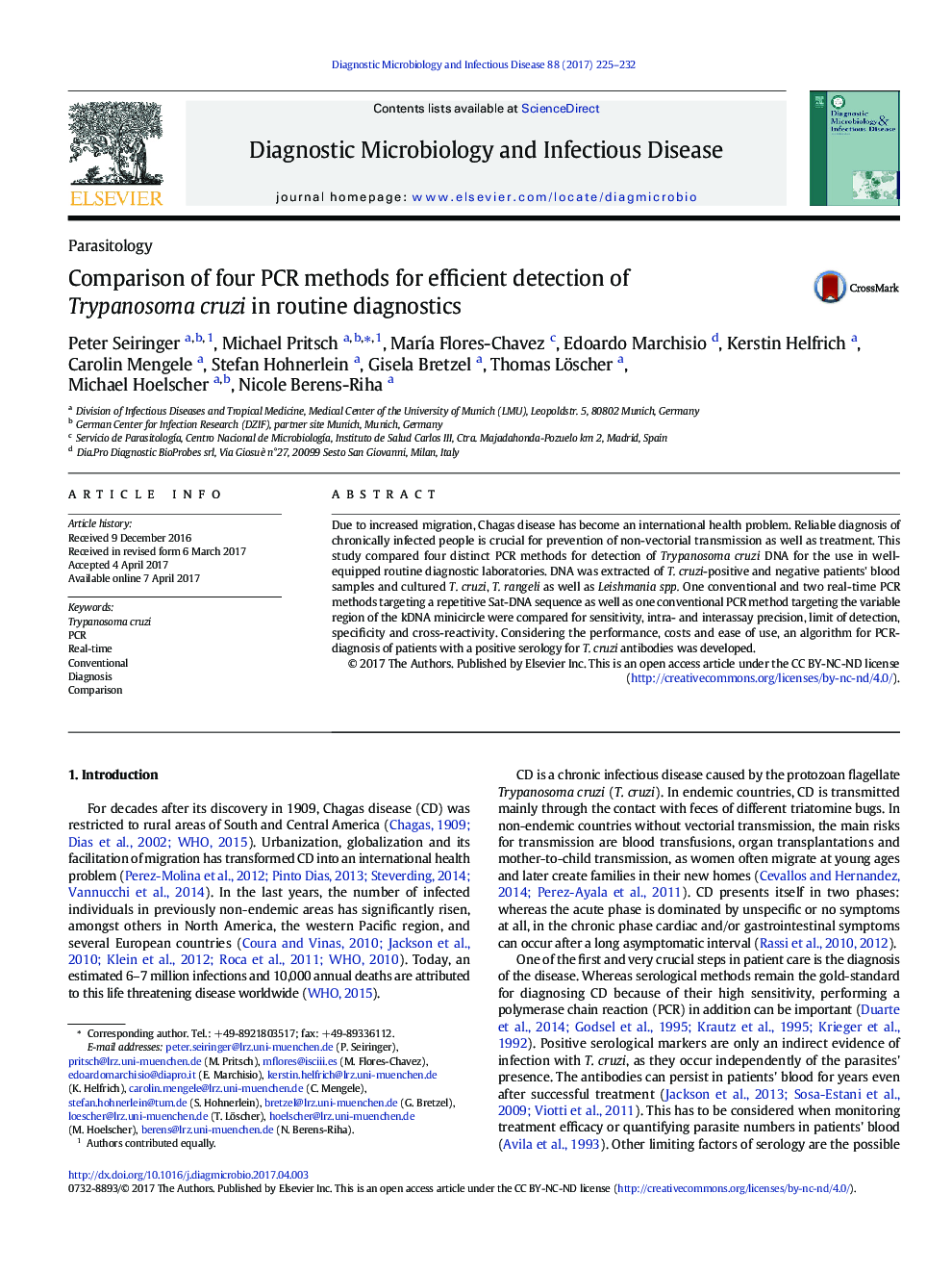| Article ID | Journal | Published Year | Pages | File Type |
|---|---|---|---|---|
| 5665978 | Diagnostic Microbiology and Infectious Disease | 2017 | 8 Pages |
â¢A conventional PCR targeting kDNA and a real-time PCR targeting satDNA performed best.â¢Conduction of both PCRs for T. cruzi detection in routine diagnostics is recommended.â¢If at least one assay is positive, the sample should be considered positive.â¢The real-time PCR kit may be used to quantify parasitemia.â¢Laboratories with limited resources may only perform conventional PCR targeting kDNA.
Due to increased migration, Chagas disease has become an international health problem. Reliable diagnosis of chronically infected people is crucial for prevention of non-vectorial transmission as well as treatment. This study compared four distinct PCR methods for detection of Trypanosoma cruzi DNA for the use in well-equipped routine diagnostic laboratories. DNA was extracted of T. cruzi-positive and negative patients' blood samples and cultured T. cruzi, T. rangeli as well as Leishmania spp. One conventional and two real-time PCR methods targeting a repetitive Sat-DNA sequence as well as one conventional PCR method targeting the variable region of the kDNA minicircle were compared for sensitivity, intra- and interassay precision, limit of detection, specificity and cross-reactivity. Considering the performance, costs and ease of use, an algorithm for PCR-diagnosis of patients with a positive serology for T. cruzi antibodies was developed.
